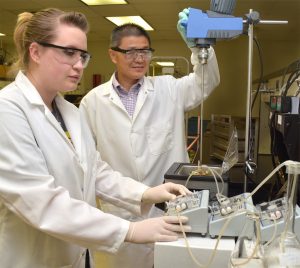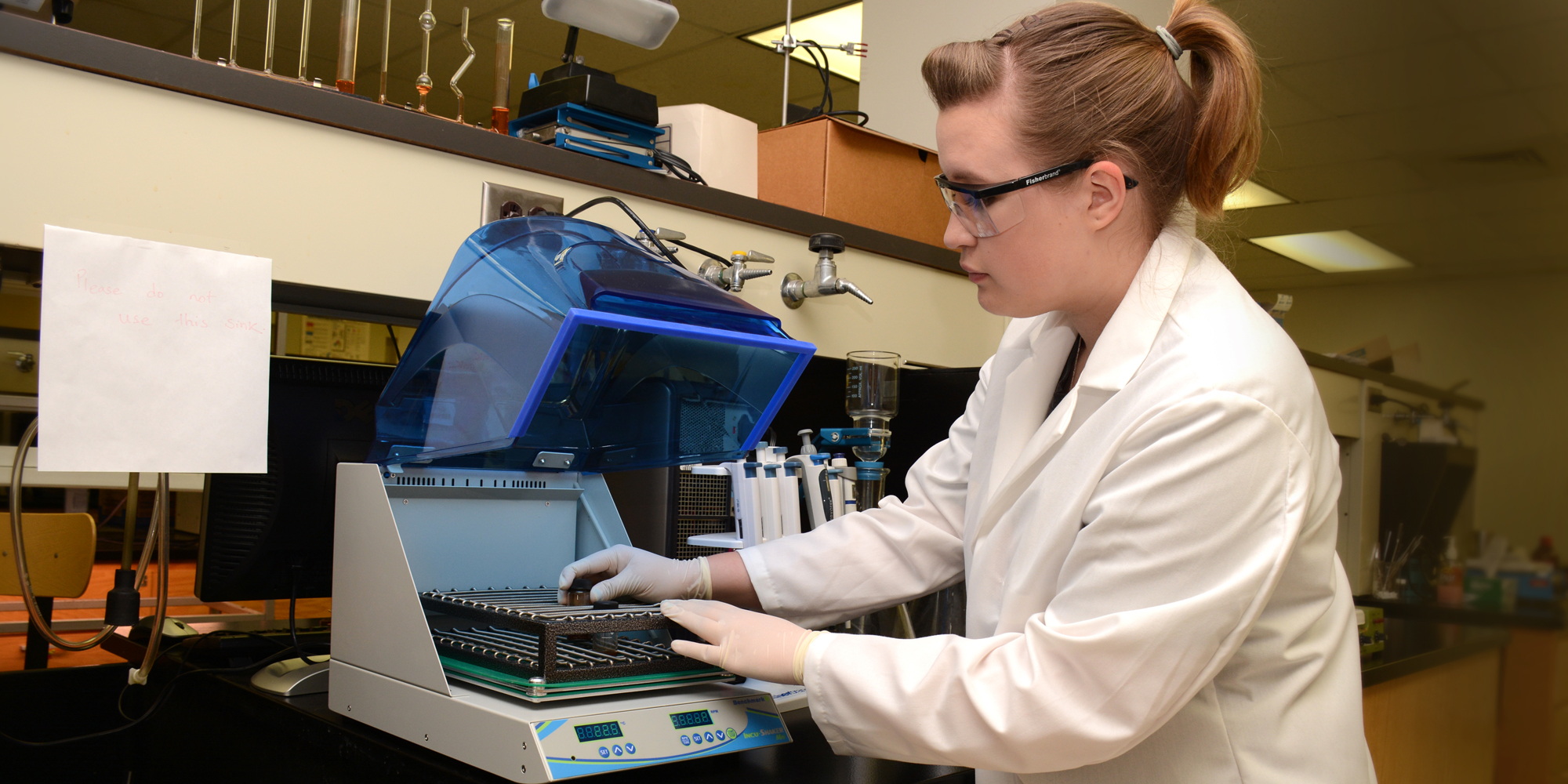“Dr. Wei was looking for real-world application, not just good results in a lab.”
Real-world results are what Robyn Christoferson, a junior biology major at SUNY Polytechnic Institute discovered this summer while working on a research project headed by Dr. Steven Wei, Coordinator of the Civil Engineering program. Upon hearing of Dr. Wei’s research on the detection and quantification of nanoparticles in industrial wastewater from another professor, Christoferson applied through the SUNY STEM Research Passport Program, which provides opportunities for students to participate in research projects across the SUNY system.
“The main goal of the research was to figure out what nanoparticles best remove arsenic from water,” Christoferson explained. “We were hoping to find a substance that was a cheaper alternative to current practices to remove Arsenic.”
To accomplish this, Christoferson had to identify and create 20 compounds that varied in complication and effort. These compounds were sent to SUNY Poly’s Colleges of Nanoscale Science and Engineering (CNSE) in Albany for imaging using the Scanning Electron Microscope (SEM) to view and determine if they were the right size.
 In the next phase of the experiment, Christoferson created stock solutions of Arsenic III and Arsenic V and inserted compounds of varying weight into the solutions. Those solutions were then placed in the incu-shaker (a shaking incubator) for one hour, allowing for a chemical reaction. A centrifuge was then used to remove the nanoparticles from the solution and the now-clean solution was placed in small vials and sent to SUNY Poly’s CNSE where the residual Arsenic amount could be determined.
In the next phase of the experiment, Christoferson created stock solutions of Arsenic III and Arsenic V and inserted compounds of varying weight into the solutions. Those solutions were then placed in the incu-shaker (a shaking incubator) for one hour, allowing for a chemical reaction. A centrifuge was then used to remove the nanoparticles from the solution and the now-clean solution was placed in small vials and sent to SUNY Poly’s CNSE where the residual Arsenic amount could be determined.
Christoferson was particularly interested in the difference in Arsenic levels in the water from the start of the experiment to the time it what was sent to CNSE. Once she had the residual Arsenic amount she plotted the differences to figure out the maximum Arsenic absorbency capacity of each material.
Of the 20 compounds tested, Christoferson and the team discovered one compound above the rest that successfully removed arsenic to a level below the World Heath Organization’s recommended amount.
“It was right at the end of the summer; we found that nickel ferrite coated diatomite (Ni Fe2 O4 DE) worked for both Arsenic III and Arsenic V,” Christoferson said, noting the large impact such a discovery could have on the world. “This was a good find because Arsenic III is typically harder to remove, and it (nickel ferrite coated diatomite) removed over 99% of the arsenic.”
While a biology student working under a civil engineering professor may seem like an odd pairing, Christoferson actually found this quite beneficial.
“From a biology view, I could see how Arsenic harms people, and Dr. Wei wanted to take it out of water. The team came from different perspectives but it helped yield better results than if it had been all biologists, all chemists, or all civil engineers,” she said. “If you are going to do research, the goal is to publish a paper.”
The summer research experience gave her the opportunity to improve her writing skills through literature reports and lab reports. She was also exposed to new lab equipment and learned to work productively in a group. After Christoferson graduates next year, she plans to attend graduate school and continue her research.
